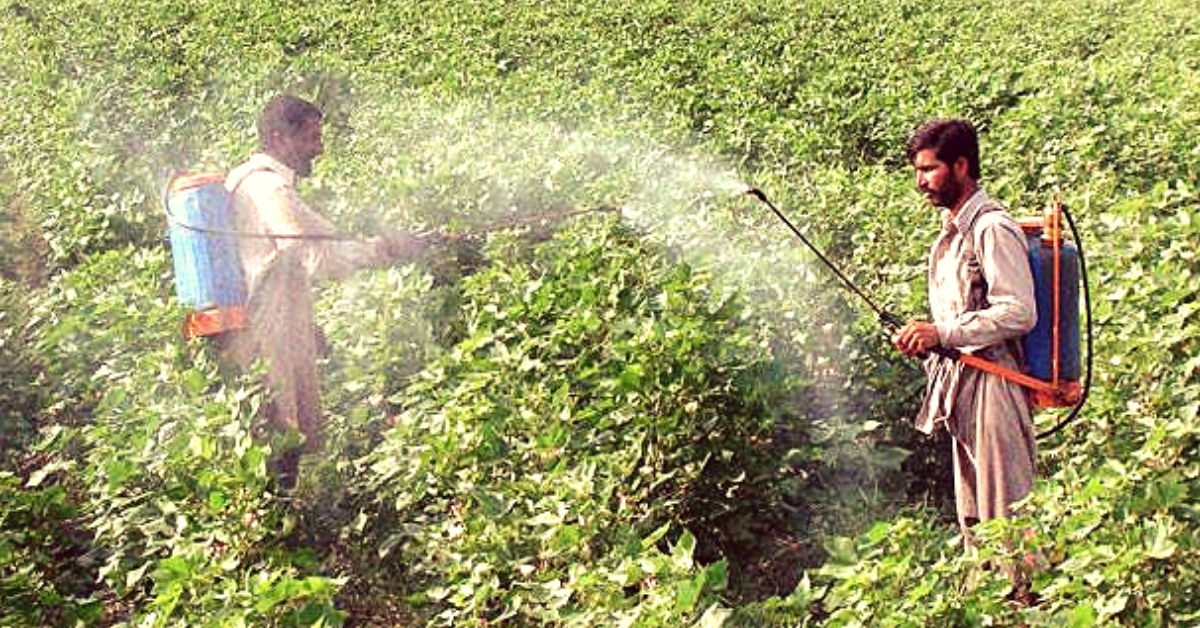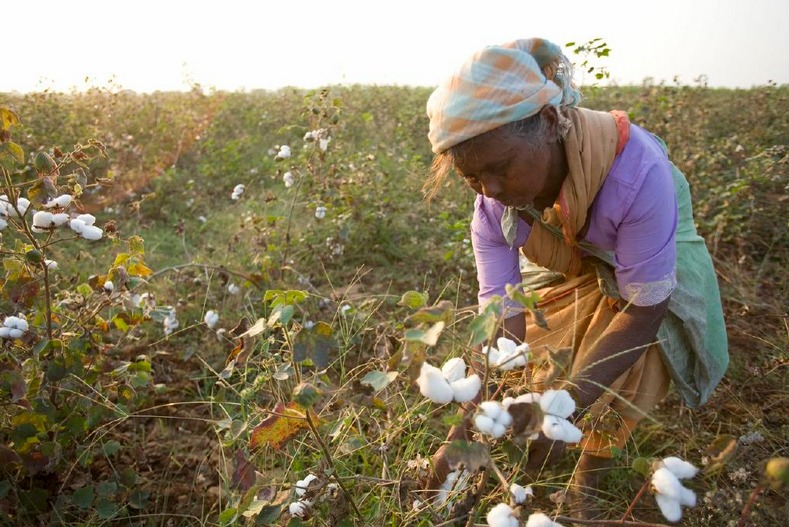Farmers First: How Maharashtra Cut Pesticide Poisoning Deaths From 62 to 2 In Just a Year!
Did you know that cotton accounts half of all pesticide use in India? And that inhaling this poisonous spray can lead to farmers losing their vision, hearing or speech, and even die?

In the farmlands of Vidarbha region, Maharashtra, cotton is the second-most cultivated crop. Grown across 1.6 million hectares of land in nine districts of the state during the Kharif (summer) season, it also accounts for half of all pesticide use in India, according to this IndiaSpend report.
However, this cash crop also brings with it the dreaded pink bollworm, a pest which ravages the crop and causes severe misery to farmers. To counteract these pests, farmers often use potent pesticides and insecticides containing dangerous chemicals without the necessary protective gear, resulting in multiple cases of poisoning and subsequent death.
Speaking to The Better India, authorities in the Maharashtra government’s agriculture department have reported that the number of pesticide poisoning cases have fallen from 62 last year (40 in the Vidharbha region alone) to just 2. In Yavatmal district (“cotton district” where the crop is grown on 4.5 lakh hectares), 22 deaths were reported last year, while this year none have been reported.
Nonetheless, authorities also state that while two deaths have been confirmed, they are waiting on the post-mortem on another five cases. These deaths were reported from Akola and Wardha districts respectively. Going by the number of patients admitted to hospitals for pesticide poisoning, the number has dropped from 507 last year to 116 this year.
In a conversation with The Better India, Subhash Katkar, the official overseeing quality control in the Department of Agriculture, lists four significant administrative steps that they took to achieve this.
“From last year, we have been compelling vendors and manufactures not to sell particular types of pesticides without listing it in the agreement they sign with the state government while acquiring their licence. When they don’t register these pesticides with the licensing officer, there is little to no scope for quality control. We decided to change this situation. Now, once they register their particular brand of insecticide or pesticide, we check for their source and quality,” says Katkar.
The second step that they have taken is to force manufacturers and vendors to sell these chemical products based on the area and crops grown on it to prevent their indiscriminate use.
“Our third step involves a special drive against retailers before the sale of pesticides and insecticides. Earlier this year, we took a large number of samples at the production and storage level. We completely banned the sale of those pesticides and insecticides found to be of substandard quality,” says Katkar.
Finally, the State agriculture department has reportedly taken stringent action against companies/dealers not abiding by our instructions and regulation stipulated in the Insecticides Act. “We have cancelled 46 licences while suspending hundreds of others. More than 11 police cases have been lodged,” he says.
Besides these basic administrative steps, both the government and local non-profits have undertaken extensive measures to teach the farmer what pesticide to spray, when to spray and how to spray it.
Earlier, farmers would rely upon dealers and companies to understand what pesticides to use. Since the bottom line is their only consideration, farmers would receive inadequate information about the dangerous chemicals that these pesticides contain. From June 2018, the state government has conducted a series of meetings with farmers and programs for greater awareness. Moreover, every week, according to Katkar, experts are sent out to the field and directed to calculate the number of pests in a particular area and whether there is a potential for a pest outbreak or not.
More importantly, a great deal of emphasis was placed on explaining the concentration of pesticide or insecticide they should use and when.
“Farmers were asked to spray around the time the pest was found to lay eggs. Consequently, compared to last year’s 15-20 odd spraying sessions through the season, the farmers did only 5-7 sprays this year, reducing their exposure to pesticides,” says another senior official in the state agriculture department, to The Better India.

Following these instructions to a T, for the first time in state history, the sale of neem-based and other organic pesticides have increased massively, particularly during the sowing stage. At the early stages of sowing, they are advised to spray only organic neem-based pesticide. Authorities claim that neem-based and other organic pesticides have seen record sales this year.
In another significant step, the government also distributed at least 65,000 safety kits—gloves, masks and synthetic aprons—as per latest figures, and 28,000 in Yavatmal district alone.
Despite the government’s claims, many farmers in the district continue to spray chemical pesticides with just a handkerchief on their face. “While the government is doing decent work with the sale of these kits, a lot more needs to be done. I can still see farmers spraying dangerous pesticides without any protective gear,” says one farmer from Kharola village, who wished to remain anonymous. Some felt that they need not wear it, while others haven’t received these kits, he adds.

Besides safety kits, the government also circulated an order to all cotton seed companies and asked them to not to sell their product to distributors and dealers before May 20.
“Last year, sowing started early towards the end of May and continued till June-end. This created a cascading pattern of flowering across the cotton belt which helped pests like pink bollworm grow from strength to strength. We blocked the entry of seeds this year, which led to sowing happening more or less simultaneously,” says Katkar, in a separate conversation with The Indian Express.
Meanwhile, the district administration in Yavatmal has also said that primary, secondary and tertiary health centres in the district have been beefed up with a dedicated staff on call to ensure victims of pesticide poisoning were attended to at the earliest.
Also Read: No Pesticides, & yet Bountiful Cotton Crops – the Secret of Farmers in Haryana & Punjab
Despite the government’s claims, other experts on agriculture have credited the sharp fall in deaths caused by pesticide poisoning to better preparation by farmers and an act of nature which has resulted in a sharp fall in the attacks by the dreaded pink bollworm. With the crops not growing to human height, farmers no longer have to spray pesticide anywhere near the vicinity of their face, thus preventing the easy passage of dangerous chemicals into their respiratory systems.
Having said that, the government’s actions have begun to pay off. The question now is to maintain these exacting standards in the years to come. Admittedly, pesticide poisoning is merely one of many problems faced by farmers in the cotton belt of Vidharbha, but at least there are attempts to address it seriously.
(Edited by Gayatri Mishra)
Like this story? Or have something to share? Write to us: [email protected], or connect with us on Facebook and Twitter.
This story made me
-
97
-
121
-
89
-
167
Tell Us More
We bring stories straight from the heart of India, to inspire millions and create a wave of impact. Our positive movement is growing bigger everyday, and we would love for you to join it.
Please contribute whatever you can, every little penny helps our team in bringing you more stories that support dreams and spread hope.



















